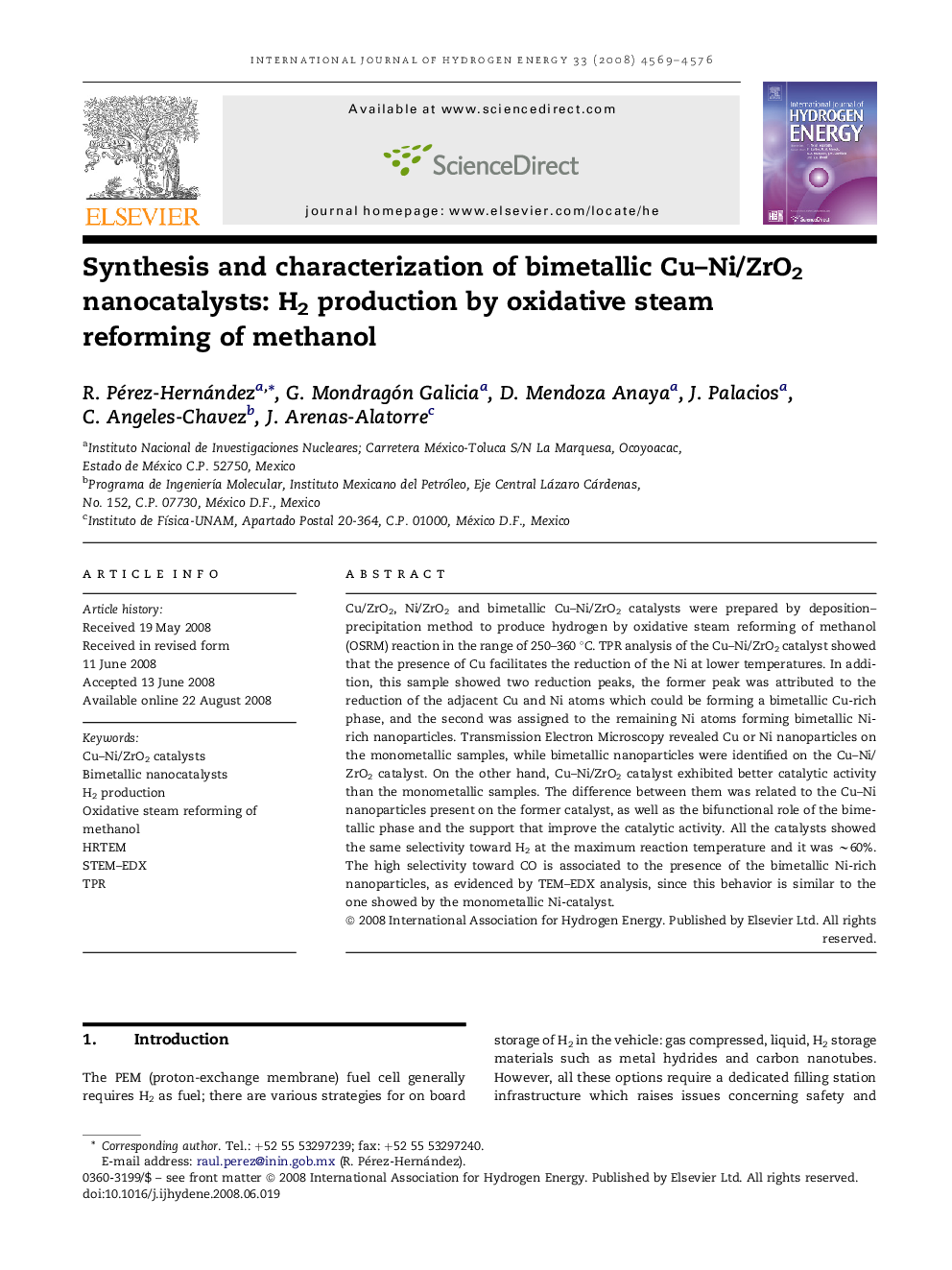| Article ID | Journal | Published Year | Pages | File Type |
|---|---|---|---|---|
| 1281518 | International Journal of Hydrogen Energy | 2008 | 8 Pages |
Cu/ZrO2, Ni/ZrO2 and bimetallic Cu–Ni/ZrO2 catalysts were prepared by deposition–precipitation method to produce hydrogen by oxidative steam reforming of methanol (OSRM) reaction in the range of 250–360 °C. TPR analysis of the Cu–Ni/ZrO2 catalyst showed that the presence of Cu facilitates the reduction of the Ni at lower temperatures. In addition, this sample showed two reduction peaks, the former peak was attributed to the reduction of the adjacent Cu and Ni atoms which could be forming a bimetallic Cu-rich phase, and the second was assigned to the remaining Ni atoms forming bimetallic Ni-rich nanoparticles. Transmission Electron Microscopy revealed Cu or Ni nanoparticles on the monometallic samples, while bimetallic nanoparticles were identified on the Cu–Ni/ZrO2 catalyst. On the other hand, Cu–Ni/ZrO2 catalyst exhibited better catalytic activity than the monometallic samples. The difference between them was related to the Cu–Ni nanoparticles present on the former catalyst, as well as the bifunctional role of the bimetallic phase and the support that improve the catalytic activity. All the catalysts showed the same selectivity toward H2 at the maximum reaction temperature and it was ∼60%. The high selectivity toward CO is associated to the presence of the bimetallic Ni-rich nanoparticles, as evidenced by TEM–EDX analysis, since this behavior is similar to the one showed by the monometallic Ni-catalyst.
